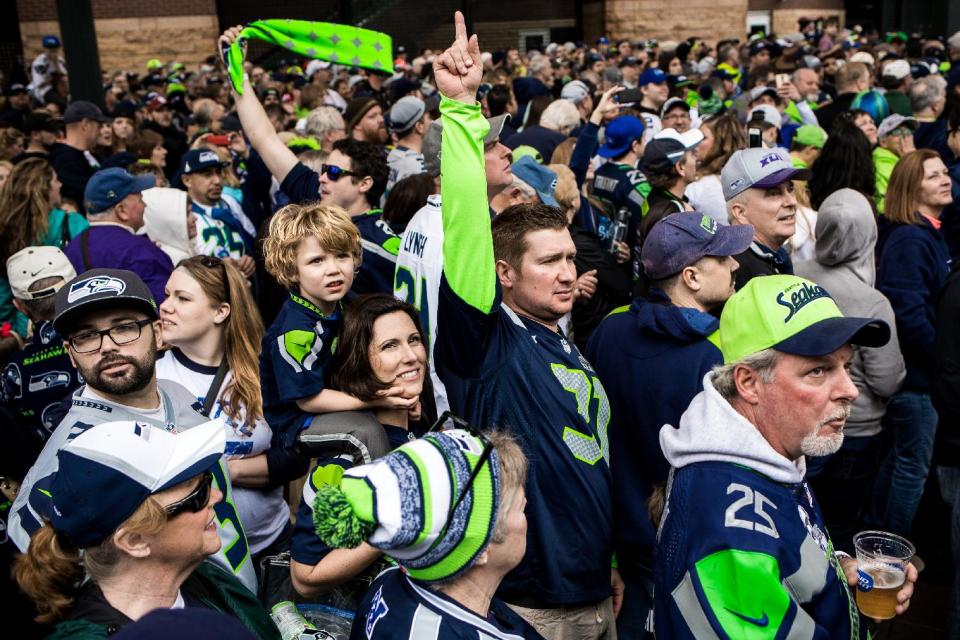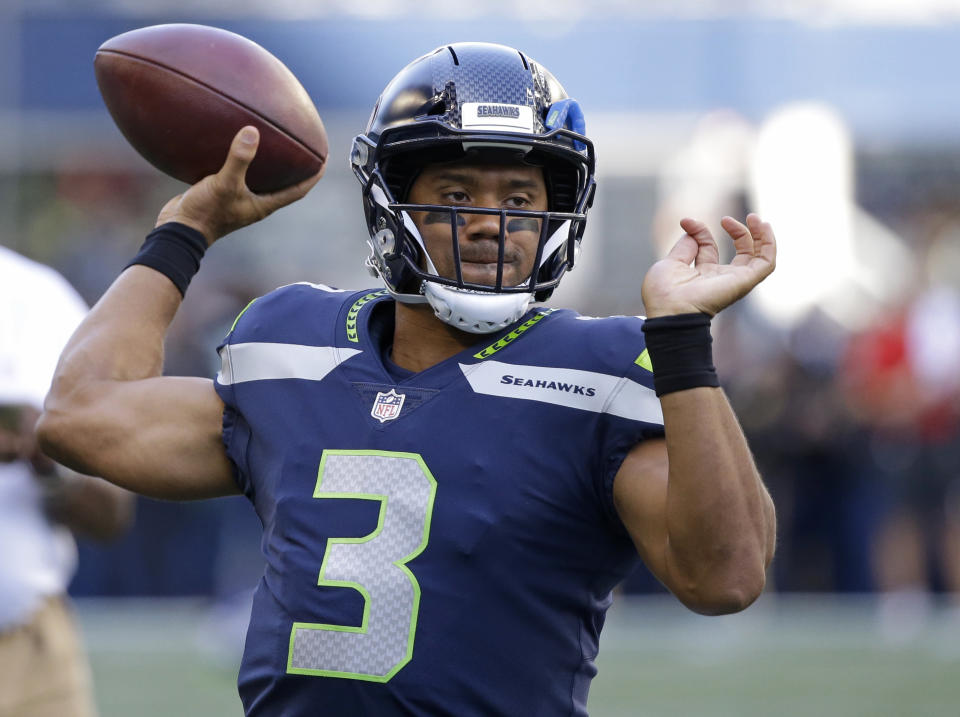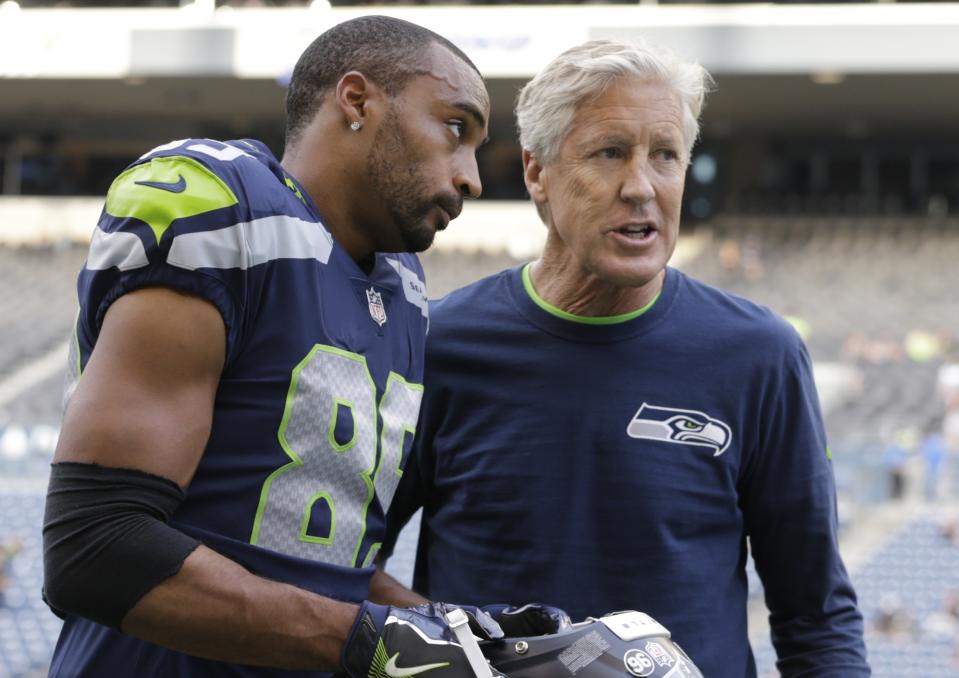Juggernaut Index, No. 5: Seattle loaded with fantasy talent, but backfield is complicated

The Seahawks had a terrible running game last season, upending everything we thought we knew about the NFL.
Seattle averaged just 99.4 rushing yards per game and 3.9 per carry last season. The year before, it was 141.8 and 4.5. In fact, this team had ranked top-five in the league in rushing from 2012 to 2015. But last year, the Seahawks slipped all the way to No. 25, finishing behind Tampa Bay, Indianapolis, Jacksonville and various other teams that couldn’t really run at all.
[Now’s the time to sign up for Fantasy Football! Join for free]
There were, of course, several reasons for Seattle’s rushing struggles last season. Marshawn Lynch was out of the mix, enjoying his one-year sabbatical. Thomas Rawls, returning from injury, was limited to 109 unproductive carries (3.2 YPC). Quarterback Russell Wilson battled significant ankle and knee issues throughout the season, delivering by far the worst rushing output of his career (259 yards, 3.6 YPC). And then there was the Seahawks’ offensive line, which graded out as one of the NFL’s least effective units in both run and pass-blocking. It was dreadful.
Seattle added Eddie Lacy to the team picture this season, which helps. He apparently hit the weight targets that were written into his one-year deal, but he didn’t do anything to separate himself from Rawls during camp or preseason action. C.J. Prosise figures to dominate snaps on passing downs, when healthy; he’s dealt with a groin injury during the preseason. Chris Carson, an afterthought seventh-round pick from Oklahoma State, has had easily the most impressive preseason in this backfield, eventually earning snaps with the first-team offense.
So we have a mess on our hands for fantasy purposes. Rawls and Lacy seem likely to split series initially, in the hopes that either player will get on a roll. Prosise has a path to 50-plus receptions if he can remain active (which is hardly a sure thing). Head coach Pete Carroll hasn’t brought much clarity to the situation. He loves everyone, per his usual:
“You start with those two guys [Rawls and Lacy], but then C.J. [Prosise] brings some stuff and Chris [Carson] is really exciting to see too and then [J.D.] McKissic’s lit us up the last couple days with all the versatility he brought and with the question of where he playing and all, so I’m fine with it.” Carroll said. “I am really comfortable and I have no problem with it. Also, I’m comfortable with a guy taking over. If a guy takes over and it’s obvious, I got no problem with that either. We are pretty — I guess that’s pretty wide open.”
I’ve been fading Lacy in drafts thus far, as he’s the most expensive fantasy asset in this backfield (ADP 85.3) and hasn’t managed to leapfrog Rawls on the depth chart. Generally speaking, Rawls can be had 30 picks later than Eddie, while Carson and Prosise are available in the end-game.
The biggest issue for last year’s Seattle run game is no less a problem this season, as the team’s O-line is not better in any obvious way. It’s a concern affecting every aspect of the Seahawks offense.
Still, we can expect Seattle’s ground game to improve substantially compared to 2016, now that one of the game’s elite dual-threat QBs is operating at full capacity.

Russell Wilson is a near-lock for a big bounce-back season.
Wilson just had his worst NFL season by most measurements and still finished among the top-12 scorers at his position in fantasy. He passed for a career-high 4219 yards, thanks to a massive jump in attempts (546, up from 483). His relative lack of mobility due to injury was, clearly, a big deal. Wilson at his best is a deadly run/pass threat, a highly accurate quarterback with exceptional rushing talent. Now healthy, he’s set up for a big season. Allow me to be the 173rd fantasy analyst to point out that if his touchdown-rate and yards per carry rebound to his career averages, he’ll be a fantasy monster. Only 3.8 percent of his passes resulted in TDs last year; his career rate is 5.6. I’ve invested in Wilson this season in my most important and highly incentivized leagues, including this one right here.
Scott Pianowski, a longtime Wilson fetishist, is again on board in 2017…
Russell Wilson could have been MVP in 2015, year Cam won. Wilson was hurt half of last year. Get him somewhere in 2017, even with QB deep.
— scott pianowski (@scott_pianowski) August 28, 2017
No member of the Yahoo fantasy crew ranks Wilson outside the top-five QBs. Get yourself a share or two. His talent is beyond question, and his receiving corps includes a pair of upper-tier options.
Doug Baldwin is a rock-solid No. 1 fantasy receiver.
Most of the fantasy production in this receiving group is concentrated with two players, Baldwin and Jimmy Graham. Those two caught 13 of Seattle’s 23 TD passes last season, and Baldwin actually threw for another. They also accounted for 2051 of the team’s 4422 total receiving yards. Baldwin has averaged 86 catches, 1098 yards, 10.5 TDs and 114 targets per season over the past two years. At this point, he’s firmly established as a WR1 in our game. If we think Wilson’s touchdown-rate is likely to climb in 2017, then we should expect another 9-12 TDs from Baldwin.

Graham finished second at his position in fantasy scoring last year, though it was an unusually quiet season from the marquee tight ends. He hauled in 65 balls on 95 targets, gaining 923 yards with six spikes. All things considered, it was a terrific campaign from a guy who’d recently suffered a career-threatening patellar tendon injury. Graham’s ceiling in Seattle isn’t quite what it was in his best years, when he was the unrivaled No. 1 weapon in the Saints’ high-volume passing game. But he remains a no-doubt top-five TE in fantasy. He’s shed weight in the offseason, toward the goal of extending his career and maintaining explosiveness, and he claims to feel “almost a hundred times” better. So there’s a useful nugget for those of you who chase members of the best-shape-of-his-life club.
[Pick one winner a week. Play Survival Football for chance at $100K]
The Seahawks dealt away Jermaine Kearse to the Jets this week, plus they waived preseason standout Kasen Williams. As a result, Tyler Lockett and Paul Richardson are unchallenged as the secondary receivers for a team that rarely produces more than one start-worthy wideout. Lockett is one of the league’s most dangerous kick and punt returners, a player with home run potential on every touch, but he’s coming back from multiple leg fractures suffered in December. He didn’t see any preseason action, though he should be good to go in the opener. Richardson has big-play potential as well, but Lockett is my preferred late-round flier.
Seattle’s D, as always, is great.
We almost don’t need a paragraph on this group, it’s so notoriously good. The Seahawks just added 26-year-old former Pro Bowler Sheldon Richardson to an already fearsome defensive front. Bobby Wagner is the best of the IDPs here, but this defense features dominant real-life players at every level (Bennett, Avril, Wright, Sherman, et al.) Seattle ranked as the fifth-best D in the league in yards allowed last season and third in scoring (18.3 PPG). There are few weaknesses here, and the division schedule is plenty appealing. This D/ST is one of the few that can be reasonably selected before the final 2-3 rounds.
2016 Offensive Stats & Ranks
Points per game – 22.1 (18)
Pass YPG – 257.8 (10)
Rush YPG – 99.4 (25)
Yards per play – 5.6 (11)
Plays per game – 63.2 (20)
—
Previous Juggernaut Index entries: 32) NY Jets, 31) San Francisco, 30) Cleveland, 29) LA Rams, 28) Baltimore, 27) Chicago, 26) Minnesota, 25) Detroit, 24) Denver, 23) Jacksonville, 22) Buffalo, 21) Philadelphia, 20) Miami, 19) Indianapolis, 18) Kansas City, 17) Washington, 16) NY Giants, 15) Tennessee, 14) LA Chargers, 13) Carolina, 12) Houston, 11) Arizona, 10) Oakland, 9) Tampa Bay, 8) Cincinnati, 7) New Orleans, 6) New England, 5) Seattle


